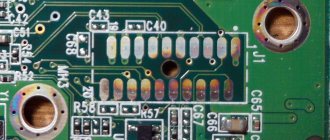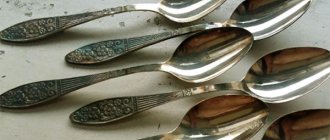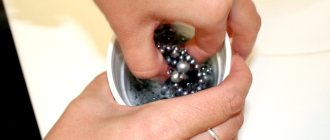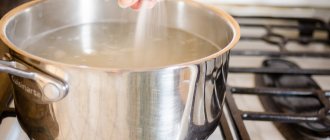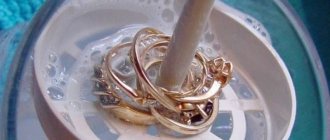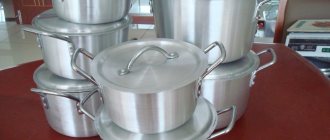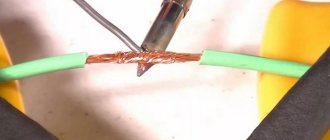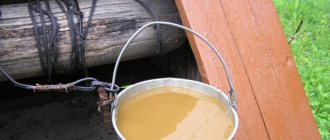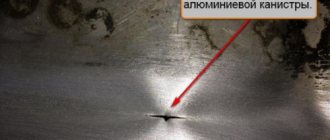Corrosion cleaning methods
To clean these corroded terminals, there are a few steps and tips you can follow:
Step 1: Make sure everything is safe enough.
You must wear protective equipment because rust contains an alkali that can cause you discomfort or even damage your health, so make sure you protect your face, eyes and hands.
You can find and wear a pair of gloves (nitrile gloves work well), safety glasses, and a face shield (medical grade).
Once you are well prepared, move on to the next step.
By accident, if you come into contact with chemicals, such as spilled or splashed on your face, hands or, in general, any other surface of the body, wipe the surface with soap and water. Leaving these chemicals on your skin can leave you with nasty scars on your skin.
In a serious case, if you feel a burning sensation or pain and do not wash away all these chemicals, you can go to the hospital.
Step 2: Disconnect the terminals from the battery
You'll need to remove the battery and check it for corrosion - the white, corrosive dust that you can see around the edges of the battery compartments.
There are two types of corrosion:
The first type is mild corrosion. Sometimes it can appear in the form of some dark, dull spots. If you see them, you can be sure that solving this problem will be easy. The other type is extension. In extreme cases, you may see salt buildup. This means that the buildup is significant and cleaning up the corrosion is a little more difficult.
Although there are two types of rusty batteries, you don't worry because the step we mention below can be applied to all types.
Step 3: Mix all ingredients together
You could place all the ingredients that are in your home on the table in order to mix it. You can place a small bowl on the table and choose one of the mixtures below.
Mix 1 tablespoon (15 ml) of baking soda with 1 cup (150 ml) of very hot water . Pour it all into a small bowl and stir.
Note: You can use very hot water instead of cold water as this may help you remove the rust faster.
Additionally, when using baking soda, you must choose other base solutions to neutralize alkalies and dissolve corrosion.
vinegar or lemon juice is not available to you in your home , you can use baking soda. You can use baking soda straight away or mix it with a little water (about 50 ml water from 2 lemons and 100 ml vinegar).
Step 4: Clean off any rust or corrosion.
If the battery terminals could be properly disassembled, it would be possible to completely submerge the battery in the mixture and rinse them. To be careful, you can wear protective gloves. After this, rinse it again with water.
Note: It is advisable that you do not pour the mixture directly onto the battery terminals because it can access the internal parts through leaks and vents and seriously affect the performance of the toy.
If you don't take it apart, you should choose one of the following methods to get rid of corrosion. Note that the time it takes to clean it depends on the degree of corrosion.
Firstly , using a cotton swab/cotton swabs. You put a cotton swab into the mixture and then clean the rusted area. It is too easy for you to clean because the cotton swab is small and it can clean the entire part even the tiny one.
Secondly , using a cloth. You soak a small piece of clothing in the base solution for as long as you need. Then you scrub away the corrosion slowly and completely.
Otherwise, you can use a wet or damp old toothbrush or brush to clean the battery terminals. Pour baking soda into the terminals and then scrub them with a brush.
If it still doesn't cause corrosion, you can scrub the area with fine sandpaper to remove the corrosion before trying the solution again.
In this process, you can use a lamp to shine a light on the inside to ensure that you clean off all the corrosion.
You may want to make sure everything is dry enough before putting the batteries back in, as the battery can short out when it gets wet.
Step 5: Dry everything with a clean and dry cotton cloth.
If necessary, you can place all toys in the sun or use a hair dryer to dry the battery terminals
Step 6: Apply grease or Vaseline to the battery terminals
To slow down the formation of corrosion on the ends of the terminals, you can apply lubricant or petroleum jelly to them.
The main reasons for the accelerated oxidation of contacts in a car
Oxidation of contacts occurs in all electrical and electronic devices, including household and industrial appliances and electrical wiring. However, in a car the oxidation process occurs with greater intensity. The main reasons for accelerated oxidation of contacts in a car are as follows:
The destruction of contacts is not always associated with the process of interaction with oxygen. For example, the destruction of battery terminal contacts is often explained by oxidation, although they are destroyed by acidic fumes. The destruction of a conductor by fungus and mold is closer to organic processes than traditional oxidation.
How to clean oxidized and rusty contacts?
The computer stopped turning on or the hard drive was detected? Does the BIOS show less RAM than it actually has? Does your phone glitch when charging? You can do without buying new components or going to a service center. After all, the common expression “electrics is the science of contacts” is true.
Often the problem lies in a missing connection on the contact pads. Especially when electronics are used for a long time in a room with sufficiently humid air. Over time, under the influence of voltage and microdroplets of water, the contacts oxidize. After eliminating the layer of metal damaged by the chemical reaction, I was able to force several “system units” to turn on and revive many “dead” hard drives that completely refused to be read.
This saved me tens of thousands of rubles and even brought me additional income. Recessed smartphones can also be disassembled and cleaned at home - the technical process is more complicated than with larger equipment. Devices can often be brought back to life even by a non-professional. Then the gadgets function, albeit sometimes with some glitches, depending on your luck.
How to clean battery contacts
The battery contacts are cleaned in the same way as the mounting terminals. Typically this operation is carried out after the battery has been depressurized. If the electrolyte has spilled only on the surface of the battery and its contacts, cleaning will be quick and easy. More problematic will be the removal of electrolyte, which has penetrated inside the electronic device and corrodes the tracks and components of the printed circuit. Here it is already necessary to disassemble the device body and carefully check the condition of the components.
A good way to clean contacts from spilled electrolyte is to rinse them in an ultrasonic bath. You can also use a cotton cloth or cotton swab soaked in vinegar to remove electrolyte salts. The contacts can then be washed with alcohol, but a more effective and safe solution would be to use isopropyl alcohol or a special contact cleaner. These preparations not only remove electrolyte and plaque, but also remove moisture and protect the contact surface from corrosion and tarnishing, while at the same time not increasing the resistivity of the connection.
Well, in order for problems with car batteries to be as rare as possible, you need to operate them correctly, which is described in great detail in this article.
How to clean stubborn plaque
An effective cleaning method is to use isopropyl alcohol IPA. But other ethyl alcohols will not work because they contain salicylate salts, which leave a white residue after drying. It is also recommended to use special contact cleaning products. Do not forget to clean the clips and contacts without using preparations or products containing water. For this reason, hydrogen peroxide recommended in some forums should be avoided.
After cleaning the battery terminals, protect their surfaces from becoming dull or corroded again. To do this, use an oily substance that will reduce oxidation of the contact surface without reducing electrical conductivity.
Aerosol petroleum jelly or copper grease will work for this purpose. Moreover, the clamps should be secured after screwing them to the battery pins. After airing, Vaseline forms a crust that effectively seals the connection without reducing its electrical conductivity.
TOP 7 best cleaners
Tools for professionals. Russian ones are cheaper, foreign ones are more expensive. If the “toad” doesn’t stifle you and pay 300 – 1000 rubles for each bottle of 200-400 ml, you can try specialized cleaners that are available on the Russian market.
A cleaner based on a mixture of special solvents and detergent additives. Removes traces of corrosion, oxides, dirt, dust, oil and grease stains, old protective coatings, etc.
Does not harm paintwork, plastics and rubber. Does not leave marks on the surfaces of conductors. Does not contain silicone or other oils.
Degreases and cleans conductors from dirt and dust. Does not destroy rubber, plastic and painted substrates.
Evaporates quickly. Manufactured from organic solvents and propellant gases.
Liqui Moly Kontaktreiniger
Designed for cleaning electrical components: terminals, plugs, relays, breakers, lamp bases, generators, starters, connectors, etc.
It removes various contaminants well, including oxide salts. Reduces contact resistance in the circuit.
Does not contain silicone. Made from special solvents.
Weicon Electro Contact Cleaner
Degreases contacts and removes various contaminants: combustion residues, soot and resin, oxides, sulfides and other substances that cause current leakage and reduce electrical conductivity.
Suitable for servicing various electrical equipment, tools, scales, sensors, switches, electrical connectors, contacts, relays and distribution devices.
A quick-drying cleaner designed to remove various contaminants from electrical appliances: cleaning contacts of industrial equipment, measuring instruments, copiers and printers, switches, keyboards of user computers, etc.
Removes dirt, oil, condensate and flux residues. Dries quickly and leaves no marks. Can be used on plastic and rubber elements.
Cramolin Contact Cleaner
